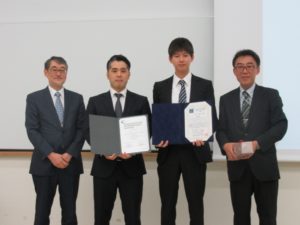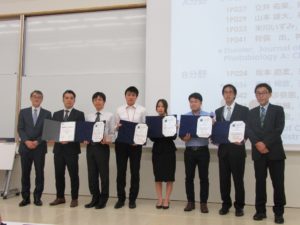 We are delighted to announce that Dr Serena Corr has been selected as the eighth winner of the Journal of Materials Chemistry Lectureship.
We are delighted to announce that Dr Serena Corr has been selected as the eighth winner of the Journal of Materials Chemistry Lectureship.
Dr Corr is hoping to present the lectureship at the 2018 Spring MRS in Phoenix Arizona, April 2018, during Symposium EN14 – Materials Science and Device Engineering for Safe and Long-Life Electrochemical Energy Storage where she is an invited speaker.
Dr Corr received her BA and P.h.D in Chemistry from Trinity College Dublin, Ireland, where she held a Teaching Fellowship for 4 years. After a bursary award to attend the ICMR-ICYS Nanomaterials School (NIMS, Japan), she moved to UC Santa Barbara to carry out her postdoctoral work with Professor Ram Seshadri.
Serena is currently a Reader in Physical Chemistry at the University of Glasgow, and has held visiting professorships at UC Santa Barbara and Otago University. Her group’s current research on the design, synthesis and characterisation of functional nanomaterials for applications in energy and the environment is especially motivated to understand the intimate structure-property interplay, a cornerstone in the rational design of materials.
In addition to regularly making invited, keynote and plenary contributions at international conferences, Dr Corr is committed to the promotion of chemistry at all education levels. She is an active member of the School’s Chemistry Outreach Group in the UK, delivering lectures and demonstrations to schools, teachers and the public. She has also taken an leading role in outreach programmes such as Salter’s Science Festival, the BA Festival of Science, and the Royal Dublin Society Science Live event.
Dr Corr is an Associate Editor on Nanoscale, and is on the Editorial Board for Nanoscale Horizons.




















